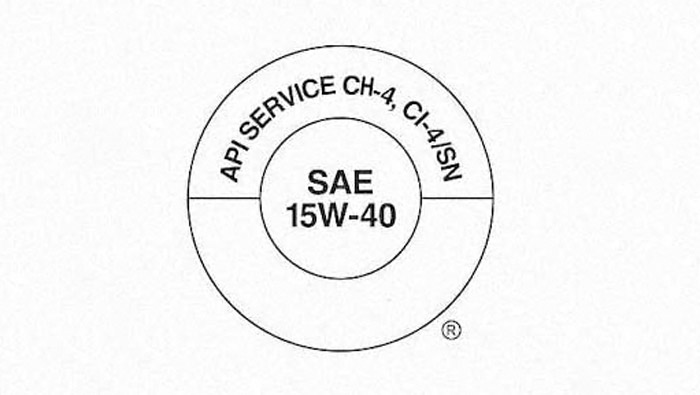
EMA proposes to halt API licensing of CH-4 diesel engine oil category
The Truck & Engine Manufacturers Association (EMA), which represents worldwide manufacturers of internal combustion engines and on-highway medium- and heavy-duty trucks, has proposed to sunset the API CH-4 diesel engine oil category, according to EMA Vice President Tia Sutton during the API Diesel Engine Oil Advisory Panel meeting in New Orleans, Louisiana, U.S.A. on 10 December.
Sutton said the performance requirements of API CH-4 are already being covered by API CI-4. In addition, some test parts are projected to run out sometime in the near future. The API CH-4 diesel engine oil category was introduced in 1998 by the American Petroleum Institute (API) to meet the lubrication requirements of high-speed, four-stroke engines designed to meet 1998 exhaust emission standards. CH-4 oils are specifically compounded for use with diesel fuels ranging in sulfur content up to 0.5% weight. It is backward compatible with API CD, CE, CF-4, and CG-4 oils, older obsolete categories.
API CI-4 was introduced four years later, in 2002, to meet the lubrication requirements of high-speed, four-stroke engines designed to meet 2004 exhaust emission standards implemented in 2002. CI-4 oils are formulated to sustain engine durability where exhaust gas recirculation (EGR) is used and are intended for use with diesel fuels ranging in sulfur content up to 0.5% weight. API CI-4 can be used in place of API CD, CE, CF-4, CG-4, and CH-4 oils.
There are currently five actively licensed API diesel engine oil categories, including API CH-4, CI-4, CJ-4 and CK-4/FA-4.
According to Jeffrey Harmening, API EOLCS/DEF/MOM manager, there are 376 API CH-4 licensed products worldwide, compared to 1,045 API CI-4 licensed products and 1,530 API CJ-4 licensed products.
API CJ-4, the all-time favourite, was introduced to meet 2010 model year on-highway and Tier 4 non-road exhaust emission standards as well as for previous model year diesel engines. API CJ-4 oils are formulated for use in all applications with diesel fuels ranging in sulfur content up to 500 parts per million or ppm (0.05% by weight).
Meanwhile, the latest API diesel engine oil categories, API CK-4 and API FA-4, have 1,353 and 103 licensed products, respectively. API CK-4 was developed to better protect new and older engines, improve engine oil performance, and help engine manufacturers meet 2017 U.S. federal government emissions standards. API licensing of CK-4 and FA-4 began on 1 December 2016.
API CK-4 provided a number of improvements over API CJ-4, including improved shear stability, oxidation resistance and aeration control., while being backward compatible. These oils are formulated for use in all applications with diesel fuels ranging in sulfur content up to 500 ppm. However, the use of these oils with greater than 15 ppm sulfur fuel may impact exhaust aftertreatment system durability and/or oil drain interval.
API FA-4 is a completely new heavy-duty engine oil category, with HTHS (high temperature, high shear) limits of 2.9-3.2 mPa·s. API FA-4 oils are not interchangeable or backward compatible with API CK-4, CJ-4, CI-4 PLUS, CI-4, and CH-4 oils.
Sutton added that EMA will evaluate all the tests within API CI-4 and CK-4. The evaluation could potentially lead to the development of a new, more streamlined future category, she said. However, Sutton also said that EMA is unsure when a completely new diesel engine oil category will be needed.
“We expect by 2027, but we do not know what will be needed by the new regulations,” said Sutton. She explained that EMA diesel engine oil requirements are driven by regulatory requirements and the development of new technologies. The latest U.S. federal emissions regulations for trucks and buses took effect in 2018 and are supposed to run through 2027.












